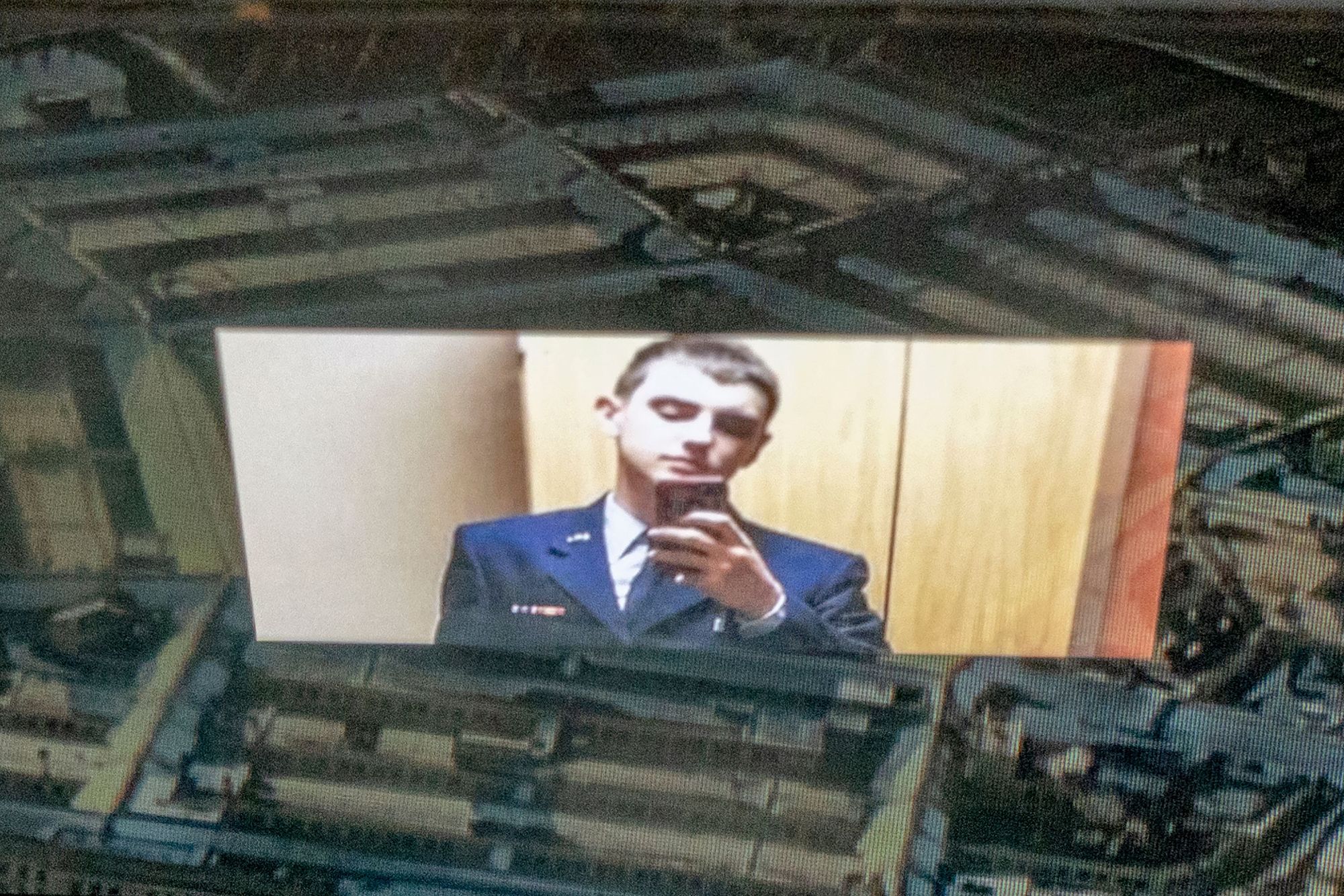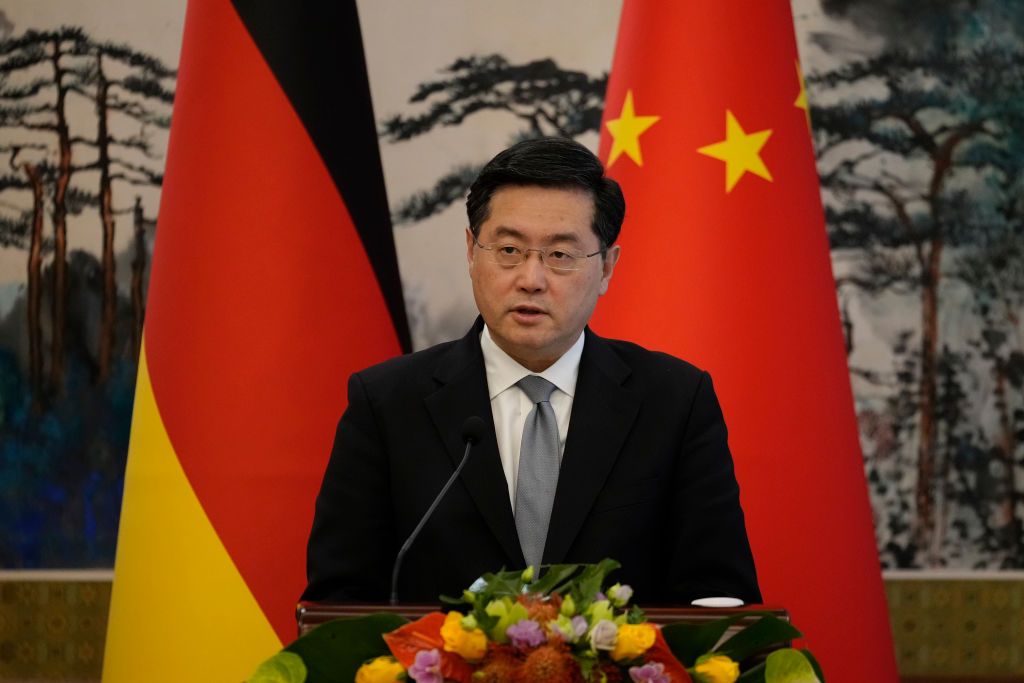Explainer: What we learned from Pentagon leak and why it matters

A major U.S. intelligence leak exposed very detailed reports about Ukraine and its war effort.
The documents detail the strength of Ukraine’s counteroffensive buildup, the U.S.’s doubt that it will go very far, Ukraine’s approaching vulnerability to air attacks, the sad state of the Russian military, Russia’s attempts to solicit weapons from some countries, how the U.S. surveils foes and allies and many more.
Officials in the U.S. largely treated the leak as genuine; Ukraine tried to downplay its importance, warning of Russian propaganda.
Hundreds of sensitive documents were printed, photographed, and posted to Discord, an online social platform, from where they slowly made their way through multiple chat rooms and then to other social media and the internet at large.
It’s unclear how many pages there are in total.
Since then, the American and allied intelligence communities and law enforcement officials have tried to track down the source and minimize the damage these disclosures could pose.
A suspect from the National Guard was arrested in the case on April 13 in Massachusetts and arraigned the next day without entering a plea.
Here is what that was all about – and the key takeaways from the leak.
How it started
The documents were originally leaked to a chatroom on Discord, an instant messaging social platform where anyone can set up their own servers and rooms. Discord is popular among gamers, YouTubers, streamers, subject enthusiasts, and friend groups.
People began posting some of the documents to other servers. Eventually, they appeared on 4chan and Telegram channels, including a pro-Russian channel that showed what looked like a modified version of one of the files.
The documents had been making their rounds for months before they were noticed by enough journalists and intelligence officials to kick up a storm of investigations by the FBI and Department of Justice, intergovernmental panels, and news outlets.
The documents didn’t all come in a single neat package and have floated around in haphazard bundles. The Washington Post said it has access to more than 300 leaked pages.
Whose fault is it
Investigations by the New York Times, Washington Post, Bellingcat, and others came to the conclusion that the leaker was most likely a 21-year-old junior enlisted National Guardsman named Jack Teixeira, who was swiftly tracked down and arrested by authorities on April 13 and charged on April 14.
He was allegedly able to access the files in his role as a systems specialist.
Teixeira was reported to have had a small Discord server that was at one point called Thug Shaker Central, where guns and military gear were the main topics of conversation.
Interviews with other users revealed that the alleged leaker, who went by O.G., did not intend to be a whistleblower but was unhappy with what he saw as government overreach and the evil of the intelligence community.
The interviews suggest Teixeira may have enjoyed the authority and meaning these documents gave him in the eyes of others.
Some blame can also be assigned to the American intelligence ecosystem. People who study intelligence say the current system is outdated in how it treats the generation and exchange of classified data and is overdue for improvement.
More immediately, practical steps can be taken to make it less likely that a bad actor can print out the sensitive material, stick it in their pocket and walk out the door.
Some people, like multiple Ukrainian officials, at least publicly cautioned against believing leaked documents and warned of Russia’s misinformation shenanigans, which Moscow denied. Counter-claims were raised online that this might be a deception by the U.S. and its allies to achieve surprise with the counterattack.
There are several reasons why that’s unlikely. The leaks have too much information that is troublesome for Russia, Ukraine, and the U.S. to be worth releasing in full. They are also light on any actual battle plans, and it’s unclear whether this leak would give either side a meaningful advantage on the battlefield or in the international arena.
Is this a big deal?
That is a matter of perspective.
By number of files, the leak is smaller compared to the previous bombshells of the past 12 years, such as the work of Edward Snowden or Wikileaks.
However, it covers more recent events in the middle of a massive land war in Europe that affects many countries all over the globe, greatly raising its impact level. It consists of dense and detailed intelligence reports with lots of information per page.
For the U.S. intelligence community, it’s a big embarrassment but one it will be able to blunder through, experts told the Kyiv Independent. Strong relationships with allies and partners will most likely remain intact despite public grumbling, experts said.
For Ukraine, the leaks may be problematic by giving Russia a more in-depth snapshot of where Kyiv is at with its counteroffensive preparation and just how starved for ammunition it really is.
On the other hand, the fact that Ukraine was struggling with ammunition was no secret, and neither was the fact of its eventual counterattack. The leak’s usefulness would also be affected by the quality of the intelligence analysis.
Russia doesn’t come out of this looking good, either. Its front-line fighting forces are portrayed as struggling, and its entire system is deeply compromised by American intel.
What developments did the leak reveal?
1. U.S. intelligence has infiltrated the Russian military.
Some reports revealed just how thoroughly U.S. intelligence infiltrated the Russian military.
The documents reference internal planning by Russia’s military intelligence or GRU. There is also evidence that the U.S. has compromised Russia’s premier private army, Wagner Group.
The access is so good that the U.S. can get daily real-time warnings of Russian attacks before they happen, which the Americans then share with Ukraine.
Intelligence expert Thomas Rid said Russia “is an open book” to American intelligence.
The New York Times reported that the revelation could make it harder to gather intel but Rid believes that Russia’s security is poor enough for it to ultimately not matter.
2. Predictions for Ukrainian counteroffensive.
The U.S. Office of the Director of National Intelligence seems to think that built-up Russian defenses plus Ukrainian training and ammo shortages will probably “strain progress and exacerbate casualties” during a counterattack, leaving Ukraine with at-best modest progress.
The documents have sensitive markings that suggest both human and signals intelligence was involved in producing this report.
The document’s authors expect the Ukrainian forces to reclaim contested areas in the east while pushing south to cut Russia’s land bridge to Crimea, that’s used as a supply route.
President Volodymyr Zelensky has repeatedly talked about the need to liberate all of Ukraine. Russia has been building trenches throughout occupied Crimea, so a Ukrainian attack there is probably expected.
3. Western plans to arm and train Ukraine.
Some documents show detailed charts breaking down Western plans to arm and train the Ukrainian Armed Forces. This includes the status of individual Ukrainian brigades, their inventories of armor, artillery, and ammunition, as well as how many rounds Ukraine is firing each day.
The details might help Russia prepare for a Ukrainian offensive, but experts who spoke to the Kyiv Independent were skeptical that this would make a huge difference, seeing as how Russia knows Ukraine is coming and also knows that it’s low on ammo and vehicles.
It remains to be seen how impactful these documents will be in the battles ahead.
4. Ukraine may run out of air defense in May.
The documents also revealed that the U.S. expects Ukraine to run out of its primary air defense missiles in May unless it gets a lot more ammunition very quickly. Ukraine’s air defenses have been worn out by a winter of regular missile and drone barrages.
Ukraine’s Air Force has recently warned that emboldened Russians may use more airstrikes, which were previously kept at bay by the deadly Ukrainian air defense weapons. The Air Force stated that Russia is modifying its bombs to make them glide, extending their range and allowing bombers to strike with impunity.
5. Foreign leaders’ dealings with Russia.
Egyptian President Abdel Fattah El-Sisi, a U.S. ally, reportedly ordered subordinates to get 40,000 rockets to covertly ship to Russia.
The document seems to summarize conversations between Sisi and senior military officials about supplying Russia, also referencing plans to send artillery rounds and gunpowder to Russia. In the conversations, Sisi asks to keep the production secret from the U.S.
American officials denied knowledge of the plan. A spokesman for Egypt’s foreign ministry commented that Egypt’s position is based on “non-involvement in this crisis,” maintaining equal distance with both sides and upholding the U.N. charter.
One report suggests that Turkey, a NATO member, was approached by Wagner to help get military supplies. The documents state that Wagner’s representatives met with Turkish contacts to purchase weapons and equipment from Turkey for Wagner’s operations in Mali.
6. As of February, Bakhmut was nearly encircled.
In late February, the city of Bakhmut was nearly encircled, and the situation there was “catastrophic,” according to Ukraine’s intelligence chief if some leaked materials are to be believed.
At the time, Ukraine publicly denied that Bakhmut was on the verge of collapse.
However, the documents bear out the words of service members who spoke to the Kyiv Independent near Bakhmut in early March, saying from what they saw, the city was very close to being encircled.
7. NATO operators present in Ukraine – most likely, training Ukrainian troops.
Some materials suggested that there are 97 special forces operators from NATO countries in Ukraine. These include 50 from Britain, 17 from Latvia, 15 from France, and 14 from the U.S.
Most are probably training Ukrainian troops but the Kremlin may use this information to support their claim that NATO is a direct belligerent – one of the central messages of the Russian domestic propaganda.
One report said that China could choose to cast NATO as the aggressor as well, using that as an excuse to increase aid to Russia.
It could also do this if Kyiv were to attack Russian territory directly with long-range weapons, as Zelensky reportedly wanted to do in February. China, on April 14, vowed not to sell weapons to either side.
8. Delicate negotiations exposed
The documents also revealed intel collected from South Korea, involving internal government discussions on whether to sell 330,000 rounds of 155-millimeter munitions to Poland, as the U.S. pushed South Korea to supply weapons to Ukraine.
South Korea has a policy of not selling weapons to countries at war. The leaks are a very untimely look behind the scenes, causing consternation. The current government of President Yoon Suk Yeol has said that a significant number of documents in the leaks were fabricated.
Another revelation concerned Israel — one report showed Washington thinks it can pressure Jerusalem to supply lethal weapons to Ukraine.
Note from the author:
Hi, this is Igor Kossov, I hope you enjoyed reading our article.
I consider it a privilege to keep you informed about one of this century's greatest tragedies, Russia's ongoing invasion of Ukraine. With the help of my colleagues, I will continue to bring you in-depth insights into Ukraine's war effort, its international impacts, and the economic, social, and human cost of this war. But I cannot do it without your help. To support independent Ukrainian journalists, please consider becoming our patron. Thank you very much.














